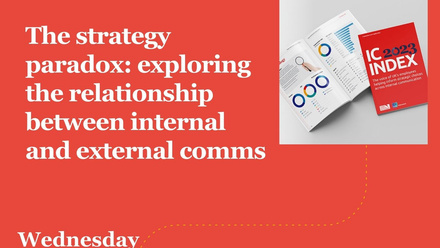In black and white: proof that print is alive

Print is not dead. In fact, according to Jan Fitzgerald, communications manager at TfL, it’s not even dying.
“Learning this didn’t surprise me,” says Jan, who conducted research into the topic earlier this year. “I have long held the belief that print is more resilient than people give it credit for, but we live in an era obsessed with digital, and many people seem to believe print has had its day.”
Jan has worked in internal comms for 12 years. Before working for TfL, she worked as a consultant in an agency, delivering print across IC for different industries. There, it was viewed as a popular and useful channel.
At TfL, print is similarly valued and the comms team is constantly looking at how it can measure the success of its internal print magazine in order to develop it.
To assist with this, Jan went looking for industry best practice on the use of print in internal comms. “I wanted to use the findings to assess and potentially update our own use of the channel,” she says.
But what she found in her search online was… well, not much. Print is notoriously difficult to measure – it requires money and resources, and even then it’s difficult to get an accurate gauge of readership – and it seemed people weren’t jumping at the chance to do the work (or at least publish it if they did).
“I decided to do the research myself,” explains Jan, “and thanks to the power of social media, I managed to survey over 60 organisations.”
Filling a gap that digital can’t
In total, 68 people filled out the survey. The biggest finding from the research was, as declared at the beginning of this article, that print is not dead, with over 60 per cent of respondents stating they use some form of print as a channel.
And, contrary to the belief of some that Covid-19 would be the kiss of death for print, it actually appears to have done it a favour.
“Print is a great way to engage colleagues on an equal footing,” says Jan, “and with so many people working remotely and with different capabilities when it comes to using and accessing tech, it levelled the playing field. It didn’t matter if you were frontline, on the field or desk-based – print could reach you.
“Not to mention, many of us suffered and continue to suffer from digital fatigue – something print provides welcome relief from.”
Jan may not have been shocked to learn that print is alive and well, but there were other findings that took her by surprise; the biggest was the minimal impact that the financial challenges brought on by the pandemic had on print budgets.
She comments: “Out of all the participants using print, only a small handful had their budget reduced. For those that deliver print magazines, the majority didn’t see any impacts on lead time or pagination, but more space was allocated to Covid-19 guidance.”
Interestingly, five of the participants from the survey stated they used print during the pandemic, but now no longer do. The reasons given for stopping include challenges with print measurement, a lack of interest from colleagues and a steer from leadership towards digital in line with sustainability and environmental goals.
“The latter is a particularly relatable battle that people wanting to use print have to navigate,” says Jan, “but if sourced responsibly, it’s possible to limit the environmental impact of print.”
Bringing print and digital together
When considering print magazines specifically, the results found that the channel promotes alignment and accessibility in organisations – with everyone given easy access to the same messaging, it’s easier to showcase unity.
“Magazines can be challenging due to their production lead times,” says Jan, “but if you want to use the channel effectively then you need to give it the right purpose. Don’t focus on trying to make it a channel that delivers timely news updates. Instead, align it to people stories and strategic content linked to the future direction of the company.
“If costs are the issue, don’t jump straight to killing the magazine – my research found that, without viable proof it is what employees want, this can negatively impact employee engagement. Instead, look at other ways to reduce costs. Change your paper, supplier, postage methods or even the frequency of issues.”
The research makes clear print belongs in the channel mix, but even as a print advocate, Jan still feels digital needs to support it.
“You need to give people options when it comes to accessing information, so having digital formats of print comms is essential,” she says. “There are simple ways to do this – it doesn’t have to be interactive, it could simply be a PDF. But allow people to choose.
“If you’re able to monitor the trends around engagement with print and digital for the same content, and you find the former to be more popular, then you can use this data to justify your use of the print in the future – should the need arise.”
View Jan’s findings on the use of print in internal comms.
Read our first article on print, where scarlettabbott's Tony Beresford considers the changing creative landscape.






